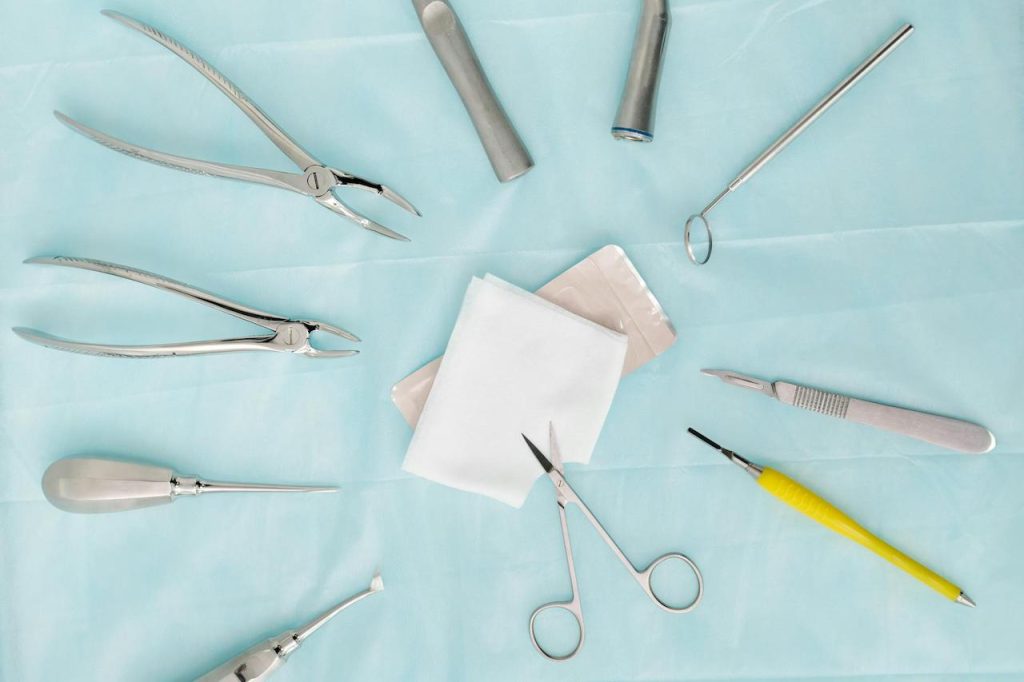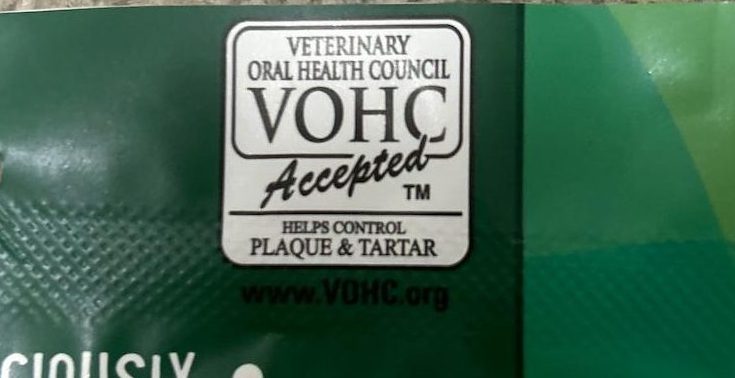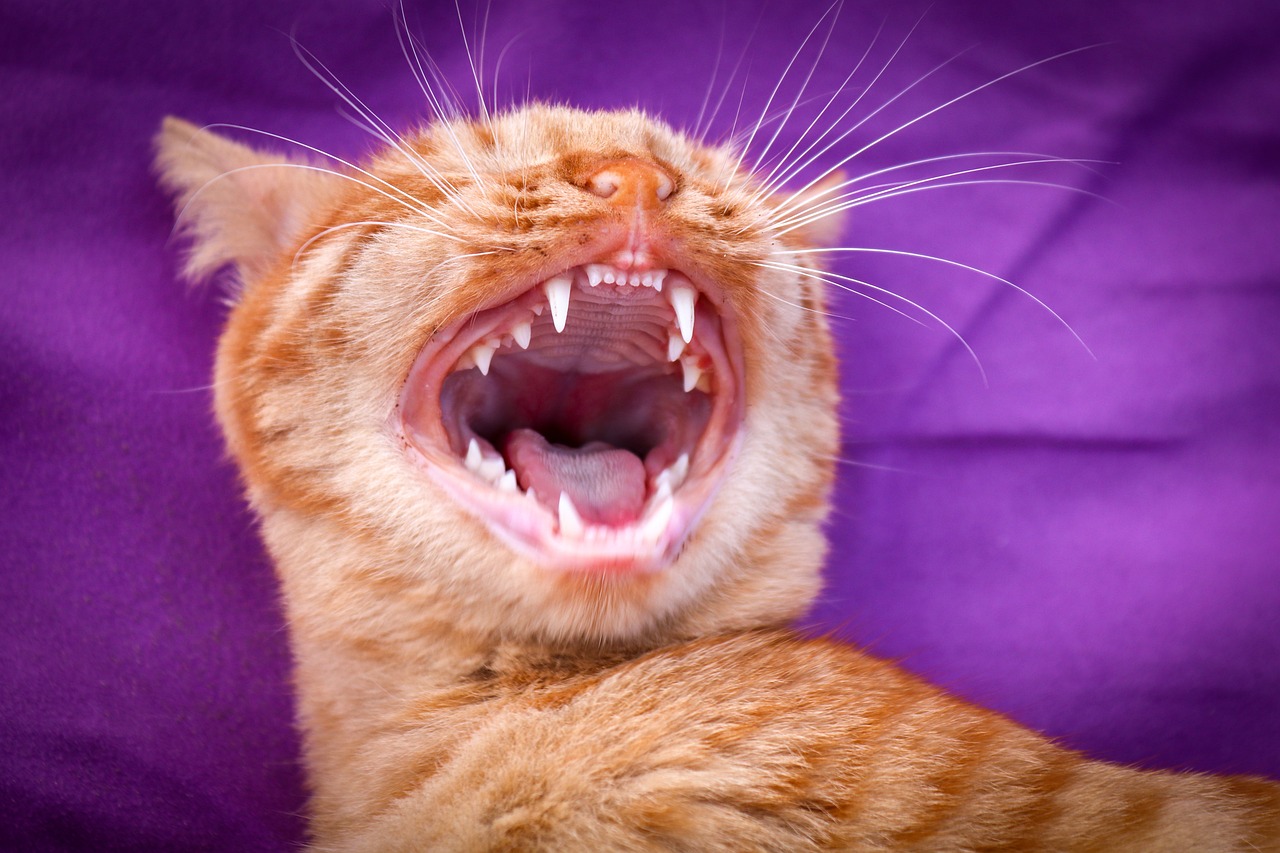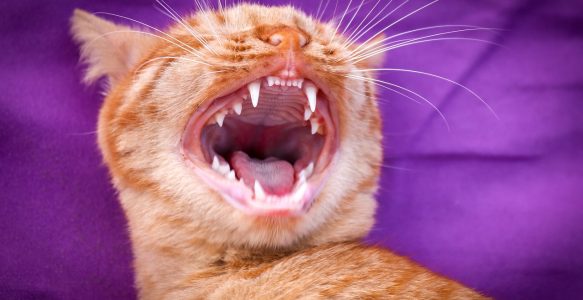Got a finicky eater that you can’t keep satisfied? Or maybe your kitty has pungent breath? The cause might be underlying dental disease. Dental Disease is one of the most commonly diagnosed diseases by veterinarians. In fact, around 80% of cats have dental disease by age 3!
When left untreated, dental disease can be a continuous source of pain and inflammation, but can also contribute to heart, lung and kidney diseases. Fortunately, it is a preventable condition, meaning there are lots of options you can try at home to protect your feline friend’s oral health.
This article looks at what dental disease is, how it’s treated and what steps you can take to prevent it from home!
Contents
•What is Dental Disease?
•What Breeds are Prone to Dental Disease?
•Signs of Dental Disease
•Diagnosis of Dental Disease
•Treatment of Dental Disease
•Prevention of Dental Disease
•Toothbrushing
•Dental Diets
•Dental Treats
•Food Water Additives
•Juvenile Gingivitis
•Frequently Asked Questions
What is Dental Disease?

The term dental disease generally refers to any inflammation, infection or lesions within the mouth, especially involving the teeth. The most commonly seen, early signs of dental disease in cats include plaque and tartar build up. However, the main forms of dental disease in cats are gingivitis, periodontitis, stomatitis and tooth resorption.
Plaque is the build of bacteria and sugars within the sticky biofilm produced by bacteria that builds up in the mouth over the course of the day. Some plaque is naturally removed during eating due to the cat’s rough tongue, and some dry food can help scrape the tooth surface to remove plaque.
Calculus or Tartar is used to describe plaque that has become hardened. Plaque must be removed when it is soft, usually within 3 days. Plaque hardens by absorbing the minerals in saliva and the gingiva (gums). Tartar has a rough surface, which is perfect for more plaque to stick to.
Gingivitis is the inflammation of the gums as a result of plaque and bacteria build up. The gumline will become red, swollen and painful as the immune system responds to the plaque build up.
Gingivitis can also be the result of systemic diseases, including FIV, FeLV, Kidney Disease and Diabetes.
Periodontitis, or periodontal disease, is a deeper infection of the gums. When plaque and gingivitis are left untreated, the bacteria can penetrate beneath the gumline, where they can damage the underlying tissues. The tissues that can be damaged by this progression include the gumline itself, the periodontal ligament that holds the tooth root to the bone, the cementum that covers and protects the tooth root’s surface and the bone surrounding the tooth root. This damage is severe and irreversible and can lead to the teeth falling out. Cats may experience periodontitis from as young as 1 year of age.
The loss of bone associated with periodontal disease can lead to other secondary health concerns, including oro-nasal fistulas (a hole between the mouth and nose), fractures of the jaw, and abscess formation, which may drain in to the mouth, under the chin, or from the face (often under or behind the eyes). The bacteria from periodontitis can also access the bloodstream and travel to other organs, such as the heart, liver and kidneys, where it causes further damage.
Tooth Resorption is the most common cause of tooth loss in cats. It is a destructive process starting within the tooth and working to the outside. The internal structure of the tooth breaks down, leading to “holes” within the teeth. It leads to exposure of the more sensitive parts of the tooth (dentin and pulp), which is extremely painful. Sometimes the crown of the tooth may be lost while the root remains hidden beneath the gums.
By the time this condition presents as pinkish spots on the surface of the tooth, severe underlying damage is already present. The exact cause of tooth resorption is not known, however, periodonitis and poor oral health are suspected to be associated with it.
Stomatitis is another condition in cats with an unknown cause that leads to severe oral pain in cats. A common thought is that stomatitis is a severe reaction by the immune system to plaque and bacteria, however, viral, bacterial, immunological and environmental factors may all play a part, including FeLV, FIV, Feline Herpesvirus, Feline Calicivirus, Bartonella, Fungal Disease and allergies.
Stomatitis is severely painful and dramatically affects the quality of life of cats, as well as being stressful for owners. While it may be resolved in many cases, some cases will continue to have ongoing pain, even with treatment.
What Breeds are Prone to Dental Disease?
Cats have small mouths within which their teeth are confined. This means that all cats are prone to dental disease. However, due to a genetic component, some breeds do tend to be more prone, including Abysinians, Main Coons, Persians and Somalis. Brachycephalic (flat faced) breeds also tend to be at a high risk, such as Burmese, Himalayans, Scottish Folds and British Shorthairs.
Signs of Dental Disease
A variety of signs of dental disease can present in cats, depending on the type of disease present and the severity of disease. However, if you notice any signs of dental disease in your cat, it is best to get the examined by a veterinarian promptly.
- Signs of dental disease can include:
- Excessive drooling
- Blood in the saliva
- Yellow/brown tartar/staining on the teeth
- Bad breath (Halitosis)
- Pawing at the mouth
- Head shaking
- Jaw chattering
- Reluctance to eat
- Swallowing food whole
- Chewing with discomfort or on one side
- Redness around the gums
- Dropping food
- Reduced grooming
- Unkempt coat
- Finicky eating (refusing dry food or preference for wet/soft food)
- Diffficulty swallowing
- Weight loss
- Tooth loss
- Pink lesions on the tooth (especially along the gum line)
Diagnosis of Dental Disease
While pet parents may notice the first signs of dental disease at home, dental disease is most commonly picked up in the veterinary clinic during routine examination. Vets will notice plaque, tartar, gum recession or gingivitis indicating dental disease. At this stage, they may be able to make some assessment as to the severity of the dental disease and advise management going forward, but often full examination is not possible until under a general anaesthetic and dental x-rays can be taken.
Treatment of Dental Disease

The treatment of dental disease can vary by the type of disease present and the severity. Early gingivitis and plaque may be able to be managed with daily tooth brushing, antibiotics or oral rinses at home. However, once tartar or deeper dental disease has developed, this will need to be professionally removed by a vet.
For our pets, this will involve a general anaesthetic with a scale and polish. The scale process removes plaque and tartar from the teeth. The polishing process may assist in removing staining, while also preventing dental disease from returning.
While your cat is under anaesthesia, the vet will also look for signs of more severe underlying dental disease. This will involve looking for loose teeth, probing the gum for recession, and potentially taking x-rays to assess for resorptive lesions. These signs may indicate the need for tooth removal, which will be undertaken while your pet is asleep.
Often teeth with periodontitis will require extraction due to the damage to the underlying tissues, including the bone and tooth root. When teeth have resorptive lesions, the only way to stop the pain associated is to remove the affected tooth.
When stomatitis is diagnosed, a full dental procedure will be recommended. In some cases, full mouth extractions are required to resolve the pain. These cases will often go home with ongoing management, which may include daily brushing, oral rinses, antibiotics, anti-inflammatories or immuno-modulators. In some cases, your vet may refer you to a veterinary dental specialist to determine the most effective treatment for your individual cat.
Prevention of Dental Disease
The old adage stands true; prevention is better than a cure!
Dental care can be started with your cat in kittenhood. This is the best way to protect their teeth and improve their lifelong health. Kittens are the most adaptable to training as well as open to the idea of trying new flavours and treats. Just be sure to check what age each product is recommended from. However, prevention can also be started in adult cats, or after a dental scale and polish, which gives you a clean slate to start from.
Whenever you are looking for preventatives, try to look for products with the Veterinary Oral Health Council (VOHC) approval stamp on them. The VOHC is a board of veterinarians and dentists who set the criteria for dental products for the pet market in order to determine if they achieve the claims they make. Only products that can prove they achieve the standards set out by the VOHC can be approved. The stamp is shown below:

Here are 4 ways you can help prevent dental disease in your cat:
1. Toothbrushing
It may sound like I just suggested the impossible, but toothbrushing is the most effective method for removing plaque on your cat’s teeth! It does take a little bit of training to get your cat comfortable with the process. Start out slow and only for short sessions to allow them to get used to the sensation of brushing, as well as the taste of the toothpaste, and don’t forget to reward them afterwards with a little bit of food (or a dental treat!).
It is recommended to brush your cat’s teeth daily, however, even just 2-3 times a week can be of benefit. Plaque that remains on the teeth for longer than 3 days will harden into calculus, which is harder to remove. If toothbrushing isn’t accepted, at least try to rub the teeth with some gauze or a tooth wipe every 2-3 days to prevent calculus formation.
Be sure to use a cat appropriate toothbrush and toothpaste. Human products are not suitable, with brushes potentially causing pain and human toothpastes being toxic to cats. A finger brush can be a great option for a cat as they are soft and small, making it more comfortable in their mouths. Many cat toothpastes have a chicken or fish flavour to make the process smoother.
Looking for more tips on brushing your cat’s teeth, check out this article: How to Brush Cat Teeth
2. Therapeutic Dental Diet
Don’t worry if you can’t get your cat to accept toothbrushing. There have been a lot of advances in the field of animal nutrition and nutraceuticals. This means there is a wide range of products on the market that are designed to remove plaque and prevent tartar, including everyday diets. There are two types of diets available on the market; prescription diets and oral care diets.
Prescription diets are those from Hills Prescription Diet and Royal Canin Veterinary. These diets are specially formulated to plaque and tartar build up, while being nutritionally balanced and complete for use as a sole diet source and containing additional nutritional benefits. Prescription diets are usually recommended for pets with a history of dental disease, or those who are at an increased risk.
Oral Care Diets are over-the-counter retail diets with added ingredients to benefit dental health. These diets are nutritionally balanced and complete for long term feeding and can be used as a standalone diet or alongside an alternative food. These diets are best suited to pets just looking to prevent dental disease. The top recommended brands include Hills Science Diet, Royal Canin and Advance.
To look for dental benefits in a food, look for the following characteristics:
- Kibble Shape/Texture: Kibble designed to support dental disease is typically designed with a specific shape or texture that allows the teeth to sink into the kibble piece during chewing. This allows the kibble matrix to “brush” the tooth surface during the chewing process, rather than breaking apart quickly and crumbling like most kibble.
- Sodium Tripolyphosphate/Pentasodium Triphosphate: This ingredient is often included in toothpaste, as well as dental dry foods. It is a whitening agent, assisting in preventing and removing yellow staining of the teeth. It also has the ability to bind minerals in the saliva, such as Calcium, which contribute to calculus formation, to aid in preventing it from forming.
3. Dental Treats
Treats are another great preventative option! Dental treats are designed to clean the teeth as your cat chews. They are dietary supplements to assist, so should be taken into account alongside your cat’s daily intake to avoid any excess weight gain.
It is recommended to look for VOHC approved treats like Feline Greenies, Dentalife Treats and Whiskas Dentabites.
4. Water or Food Additives
Alongside edible preventatives, there are also a wide variety of water and food additives available to prevent or reduce dental disease. It is important to follow the dose carefully and to keep in mind that fussier cats may not like the associated flavour change to the food or water.
Many of these products on their own are not sufficient to control plaque, and instead should be used adjunctively to some of the above dental care options. They tend to assist with managing the symptoms of dental disease, particularly bad breath, rather than curing it. In saying that, some VOHC approved products are suitable for reducing plaque and tartar, like the PlaqueOff Powder.
Juvenile Gingivitis

Can kittens get gingivitis too? The answer is yes. It is normal for teething kittens to have some inflammation of the gums during the eruption of their adult teeth (around 3-7 months of age). Normally, once eruption has finished, the gingivitis will recede, however, some kittens may experience a persistent, more severe gingivitis.
Juvenile Gingivitis, sometimes also called Juvenile Hyperplastic Gingivitis, is a severe general inflammation of the gums seen in kittens around 6-12 months of age. It can also be associated with hyperplasia (increased growth) of the gum tissue.
The exact cause is unknown, however, it is considered to be a multi-factorial, complex disease, with possible eruption inflammation, bacterial, viral, immune system hyperactivity and genetic predisposition as contributing factors. It is more commonly seen in Maine Coon and Siamese kittens.
Juvenile Gingivitis is treated typically with a professional scale and polish, alongside home care. It is important to keep the teeth clean. The scale and polish provides a clean slate to start with. At home it is important to maintain daily brushing, preferably with a pet toothpaste containing Aloe Vera and Propolis, as well as using a chlorhexidine antibacterial oral rinse. Professional cleans, may be recommended every 3-6 months during the course of treatment as progression of the disease can lead to Feline Juvenile Periodontitis and tooth loss. Under anaesthesia the vet is also able to remove any excess tissue that has developed.
To assist with the pain associated with the disease, your vet may also prescribe a non-steroidal anti-inflammatory medication. Other commonly prescribed aids include immune system boosters. Most cases will resolve by 2 years of age with good veterinary and at home management, however, treatment does often involve the extraction of multiple teeth.
Frequently Asked Questions
Why Must a Dental Be Done Under General Anaesthetic?
We can’t explain the process behind a dental to our pets, so they won’t understand what is happening if we start poking and prodding around in their mouth or scraping at their teeth. Dental machines can be loud, which can be frightening for our cats. You probably also know from going to the dentist yourself that it can be uncomfortable holding your mouth open for a long period of time.
Using a general anaesthesia makes the procedure much less stressful and quicker for your cat, and it also removes pain if your cat should need extractions. A general anaesthetic is also important for protecting the safety of your vet while working closely with your cat’s mouth and allows your vet to thoroughly investigate the severity of dental disease beneath the gums completely without causing distress or discomfort for your pet.
How Much Does a Dental Scale and Polish Cost?
The cost of a dental scale and polish will vary based on your location and the severity of your cat’s dental disease. For a general scale and polish, this may cost around $300-$500. However, if your cat requires extractions, the cost could come up to $2000. Book in with your regular vet for a dental examination and quote for your individual cat’s dental care.
Why Is Dental Care Important?
Dental disease is one of the most commonly diagnosed health problems in the veterinary clinic. Dental disease directly contributes to oral pain, difficulty eating, reluctance to eat and weight loss, which can all contribute to considerable discomfort and illness for your pet.
The bacteria from dental disease also has the potential to access the bloodstream, where it can be taken to other organs within the body, causing illness there. This can include the heart, liver and kidneys, which could be potentially fatal if affected by bacteria from the mouth.
How Often Should A Scale and Polish Be Done?
For the best prevention and dental care, it is recommended for cats to receive a scale and polish every 6 to 12 months. This removes any plaque and tartar buildup that may have occurred despite at home prevention to prevent deeper and more severe dental disease.


